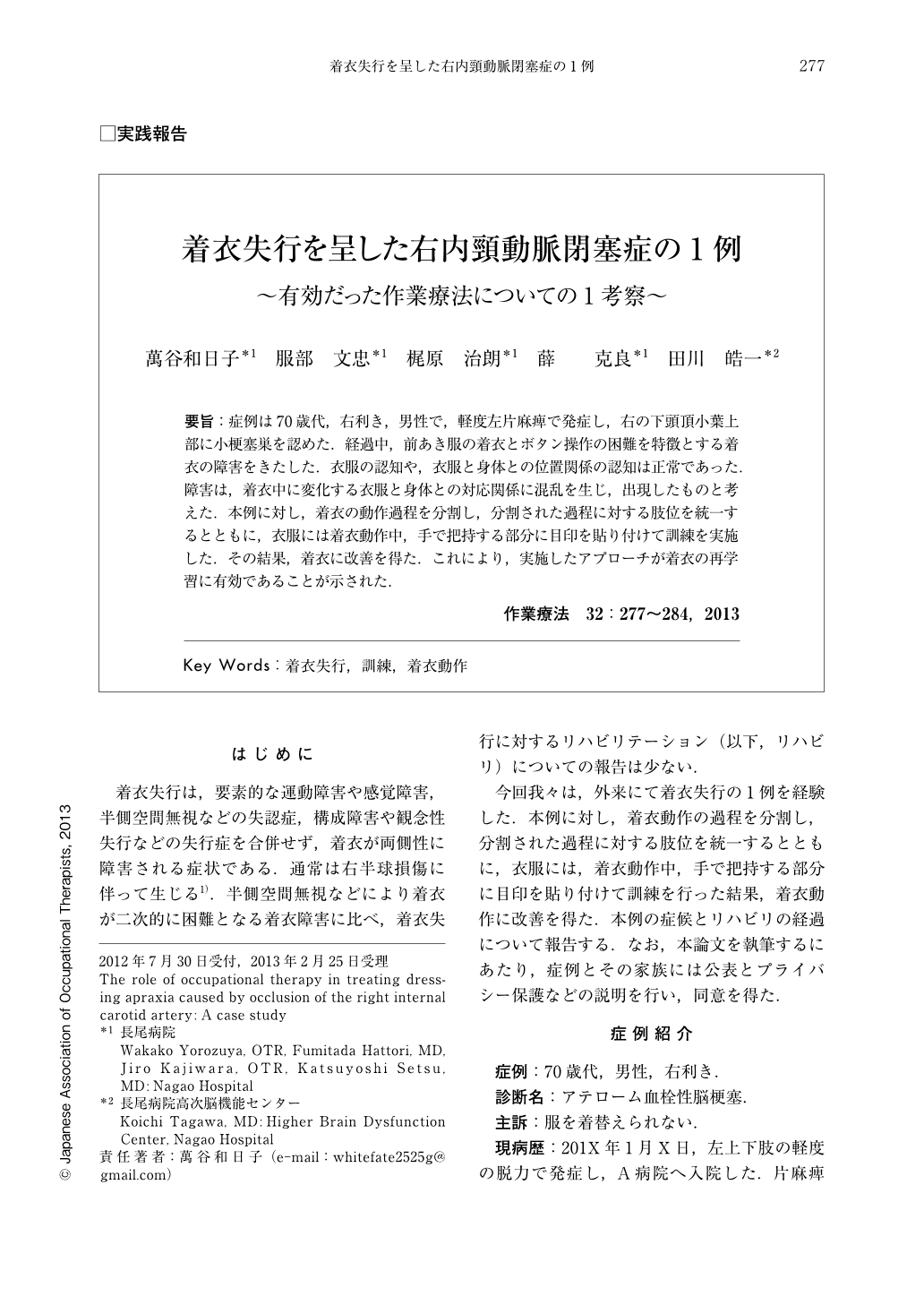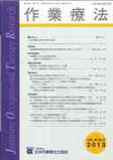Japanese
English
- 販売していません
- Abstract 文献概要
- 1ページ目 Look Inside
- 参考文献 Reference
要旨:症例は70歳代,右利き,男性で,軽度左片麻痺で発症し,右の下頭頂小葉上部に小梗塞巣を認めた.経過中,前あき服の着衣とボタン操作の困難を特徴とする着衣の障害をきたした.衣服の認知や,衣服と身体との位置関係の認知は正常であった.障害は,着衣中に変化する衣服と身体との対応関係に混乱を生じ,出現したものと考えた.本例に対し,着衣の動作過程を分割し,分割された過程に対する肢位を統一するとともに,衣服には着衣動作中,手で把持する部分に目印を貼り付けて訓練を実施した.その結果,着衣に改善を得た.これにより,実施したアプローチが着衣の再学習に有効であることが示された.
We report on a patient with dressing apraxia who recovered his dressing activity after occupational therapy. A 79-year-old, right-handed male was admitted to our stroke center complaining of slight left hemiparesis. Brain imaging revealed a small infarction in the upper portion of the right inferior parietal lobule. Neuropsychological evaluations showed no disorder in intellectual functions, visuo-perceptive ability or constructional ability, and he could recognize both clothes and the correspondence of clothes to his body. However, he had trouble putting on his jacket and fastening it with buttons. We concluded that his dressing apraxia might be related to an inability to recognize the spatial correspondence of clothes to his body. We treated the disorder by sticking cues on his clothes to help integrate the dressing procedure and the posture of his body. After treatment for 3 months, he recovered his dressing activity. The case indicates that this approach might be effective in treating dressing apraxia.

Copyright © 2013, Japanese Association of Occupational Therapists. All rights reserved.


